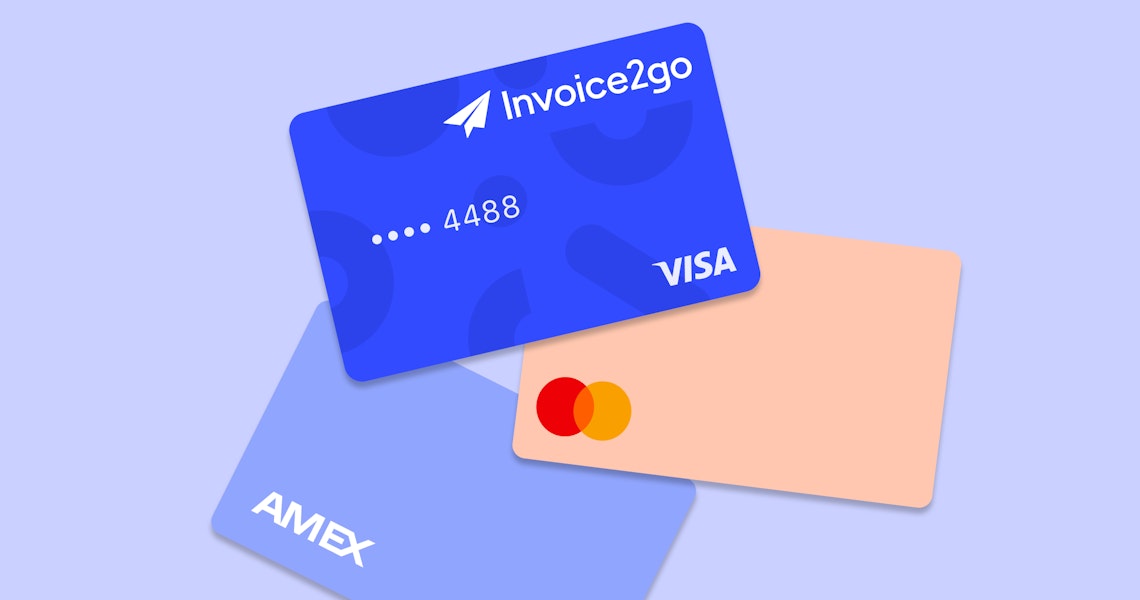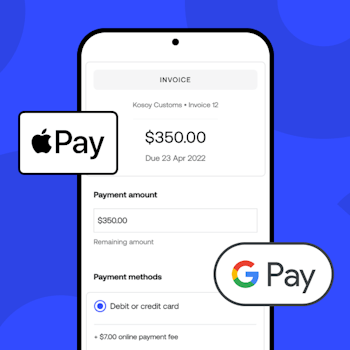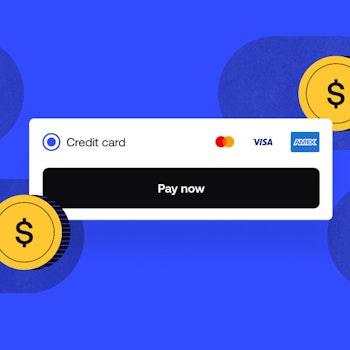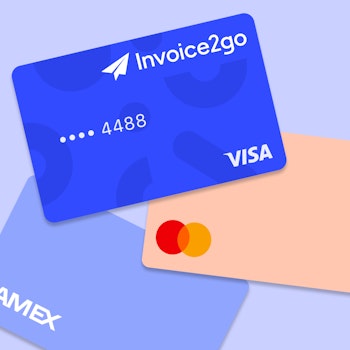
The best way to accept credit cards for small business
Accepting credit cards is a significant advantage for small businesses. According to an article recently published in The Balance, credit cards are quickly becoming the primary mode of payment for consumers. When you accept credit card payments as a freelancer or small business owner, you open opportunities to reach more customers, boost sales, and legitimize your business with a competitive edge.
With summer behind us and the final months of 2022 coming into view, it can be a time to reset your focus and set some new short-term and long-term goals. If you’re looking to improve your customer experience, build your bottom line, and maintain steady cash flow, accepting credit card payments can help you get there.
But what about the fees?
Inflation is up, cash is tight, and the future can seem unclear. You probably can’t avoid processing fees entirely if you accept credit card payments, but you can minimize them and then write them off at tax time. With some due diligence and minor adjustments, you can find the best way to accept credit cards for your business.
Read on for everything you need to know about online payments and card processing fees, and suggestions to help you reduce the latter.
Ready to see how Invoice2go can help you easily accept credit card payments and get paid faster?
Average costs of credit card processing for small businesses
There are a bunch of payment processors to choose from, each with different fee structures. Some charge a merchant account fee based on a percentage of the sale, a transaction fee, and/or a monthly or yearly service fee. Some charge a flat rate, and others charge variable rates, depending on the type of credit card used.
Transaction fees typically range between 1.5-3.5%, depending on the type of sale (swipe vs. online credit card payments). Still, the amount may vary depending on the type of credit card used and the volume of credit card transactions you complete.
Equipment rental or purchase might also be an ongoing expense if you have a brick-and-mortar location or take in-person payments. Some companies provide these items free with a subscription or charge a deposit that you can get back if you switch providers or move on.
Types of credit card processing fees
Credit card processing companies operate under one of three general pricing models:
- A flat rate for all transactions can be advantageous for small businesses with a low volume of transactions. It’s simple, predictable, and controllable, but it might not be best for you. For example, if you sell many lower-priced items, that flat rate can end up being pretty high when you view it as a percentage of sales.
- Flat transaction fee plus a percentage (interchange plus). The percentage typically covers the credit card issuer’s fees, also known as an interchange fee. Processing fees can be negotiable if you do high-volume sales, which could save you a good chunk of change. The flat rate is the amount that goes to the processor, while the percentage (interchange) goes to the credit card issuer.
- Tiered pricing combines interchange fees and processing fees, but you pay a consistent rate regardless of the type of card used. While this might sound pretty good, the actual pricing is pretty murky, so it could be challenging to prove value.
If you already use a credit card payment processor, you’ll need to understand what you’re currently paying before you can identify a better option — if indeed there is one. Take some time to deep dive into your processing fees and drill down on your monthly costs. With that number in hand, you’ll have a benchmark to compare other options.
How to accept credit cards and pay fewer fees
Your success as a small business owner can hinge on whether you have a payment gateway to process credit card payments. But if you’re concerned about what you’re paying for the privilege, it’s a good idea to know your options.
These days, it’s more important than ever to accept as many forms of payment as possible. People are paying with credit and debit cards more and will often choose merchants based on whether they take their preferred card.
Here are a few ways to get all the benefits of credit cards while minimizing the downsides.
1. Know that you can write off credit card processing fees at tax time!
Since card processing fees are a business expense, you can write them off on your taxes. While you still have to pay the fee at the time of the sale, you can deduct all of your merchant processing fees as an essential operating cost.
Take advantage of every deduction available to you. Check out our ultimate list of small business tax deductions to learn more!
2. Get competitive rates when you accept credit card payments
It pays to shop around. Identify potential processors and compare rates. Ensure you’re comparing apples to apples. If you can’t find a review site that offers comparisons (some are biased, so it’s always a good idea to do your own legwork), create a spreadsheet to see everything laid out on one page.
Column one should be your current provider, followed by top players in the market. Don’t be afraid to ask your colleagues or competitors for advice; they might have valuable intel that’ll cut down your research time.
3. Use a payment service provider
If you’re working with your bank for payment processing, you’re likely paying higher fees. Banks operate on a model that hasn’t changed their approach even though they’ve got a lot of competition.
Payment service providers like Invoice2go can be excellent alternatives. If they integrate with the systems you already use, all the better, since they’ll help you automate your bookkeeping workflow and keep all your financial data organized.
4. Check out mobile payment processors for credit card payments
Mobile payment processors are massively convenient for small businesses that are just starting out. If you’re an Invoice2go subscriber, you can send invoices via email or SMS from your mobile and allow customers to pay by card directly from the invoice.
Some companies provide physical card processing equipment for free and don’t require a contract or subscription to start. It’s an excellent way to get going, and you can always upgrade to more sophisticated gear as needed. In other words, you don’t have to commit to anything upfront, and you can scale as you go.
5. Cancel features you don’t use or need
When comparing subscription plans, look at the features offered and decide whether the fee is worth it. If you don’t see yourself using most of the program’s benefits, it might not be your most cost-effective choice. Can you pick and choose à la carte features? Or are you stuck with a package based on your pricing tier? It’s all about value, so make sure you’re getting your money’s worth.
6. Choose a plan with flat-rate pricing
Small businesses and new businesses generally benefit from flat-rate pricing, at least initially. As you grow, you can move to an interchange-plus plan to reduce credit card processing costs even more.
7. Don’t commit to lengthy contracts
Long-term contracts lock you into a rate and a plan, which might not be your best choice. Rates tend to fluctuate, and if they trend down, you might be on the hook for more than you need to pay. Even if you can get out of the agreement, you might be forced into a buyout. Choose a processor that allows you to go month-to-month with minimal strings attached.
8. Can you negotiate a discount?
If you’re an e-commerce business doing large transaction volumes, you might be in a position to negotiate discounts on your processing fees. Your interchange fees are pretty much set, but there might be some wiggle room with the processor’s fee. You’ve got nothing to lose from having that conversation.
9. Review your processing and plan fees periodically
Rates go up and down. If it’s the former, it’ll cut into your margins. You might not even notice until you look at your balance sheet or compare numbers from the previous year. If you regularly schedule time to review your subscriptions, fees, and other business expenses, you’ll have a better handle on what’s changed and might be able to make adjustments before it gets out of hand.
Remember that spreadsheet we talked about in point #1? Give it a once-over from time to time, so you always have a handle on factors affecting your profitability. Research what’s changed in the industry and find out if there are any special offers or new business models you could be taking advantage of. Invoice2go Money, for example, lets you add a service fee to credit and debit card payments to cover card processing costs. Your customer can enjoy the convenience of online payments, while you get to pocket the entire amount listed on your invoice.
The current rate of inflation demands diligence on your part. Based on what you learn, you might need to revisit your pricing, add new products, or remove products or services costing you money. Whatever you choose to do, knowing is 99% of the game. The more control you have over your circumstances, the more sustainable and resilient your business will be to economic changes.
10. Limit the types of cards you accept
Premium cards often charge premium fees. For example, high-value travel rewards cards, Discover, and American Express tend to charge merchants higher interchange fees, which either must be passed on to the customer or absorbed by the merchant.
The caveat here is that if you decide not to accept payments from these cards instead of charging the fees back to your customers or taking the L, you might lose a few customers along the way. Chances are these cards won’t be the bulk of your business, but it’s worth considering.
11. Set minimums for credit card purchases
Processing fees can cut into your profits if you sell a lot of low-dollar items. For example, if some items on your website sell for $5, you might sell hundreds of them and be on the hook for a transaction fee for each individual purchase.
One way to address this is to set a minimum for credit card payments or enforce multiple orders. Many sellers do this for their low-dollar items, and most buyers don’t mind too much. If you’re selling eyeshadow for $3.50, most buyers won’t mind getting three, especially if they can mix and match.
12. Offer cash discounts or pass fees on to customers
Earlier, we mentioned charging customers back for processing fees to lower costs and cover your expenses, like Invoice2go Money allows you to do. Some merchants choose to do business this way.
Most of the time, the fee doesn’t add up to a significant dollar amount. But it might be a turn-off if the charge is blatant—in other words, if your credit card terminal notifies the customer of the additional fee. There are a couple of ways to address this, should you choose this route.
The first option is to tack a service fee onto each transaction, which will pop up when they use your credit card terminal or check out on your website. Or, you could raise your prices slightly to cover the processing fee and build it into the price, making the extra charge invisible to the customer.
In either scenario, you might choose to offer a discount if they pay in cash, which would help you avoid the fee entirely. Of course, this approach wouldn’t be appropriate in all situations, but restaurants, taxis, convenience stores, and most brick-and-mortar retailers can use this strategy to save. The prospect of getting a discount might even be compelling enough for some customers to go out of their way to pay cash, which can benefit you in myriad ways.
Ready to accept credit card payments?
Related Articles

How to accept credit card payments on Invoice2go in 3 simple steps

Accept payments online via Apple Pay and Google Pay

Must-not-miss write-offs as you wrap up 2022 year-end finances

5 ways accepting credit and debit card payments helps your business stay resilient

4 easy ways to increase cash flow today

What is Small Business Saturday and why is it important?
The features and surprising benefits of a well-designed packing slip
